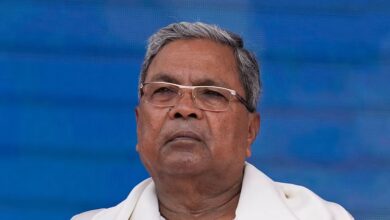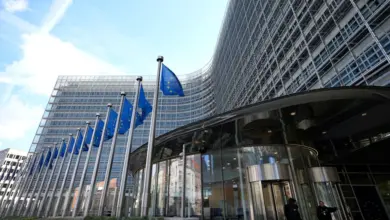
In 2011, The Supreme Council of the Armed Forces (SCAF) sent the Egyptian people 93 letters via its official Facebook page. The first letter opened with the announcement that the SCAF will rule the country during the transitional period in the wake of the 25 January revolution.
A careful reading of the SCAF’s 93 letters reveals a shift in its discourse, particularly in its understanding of its role vis-a-vis the revolution, its perception of national interest and its depiction of the revolutionaries.
The first letter, posted on 17 February, was the first in a prolific month; a total of 26 letters were posted in the month of February alone. The frequency was remarkable in the outset, with a rate of two letters per day. Soon afterward, the rate dropped to eight letters in the entire month of March, five in June, five in July, three in August and one in October; and rose again slightly to 11 in the month of November and six in December, including — for the first time — a letter in video-format.
The longest period of silence was from 5 October (letter 76) to 2 November (letter 77). This period was marked by the 9 October violence when military forces shot and ran over mostly Coptic protesters as they marched to the Maspero state TV building.
If the “Like” count on a Facebook post is in any way revealing, it shows that fewer and fewer numbers of Facebook account-holders are impressed with the SCAF’s letters. During the month of February, the “Like” button on each letter posted was hit by about 20,000 account holders on average. By the end of the year, each letter got an average of 5000 “Likes,” a quarter of the initial numbers, despite the fact that the number of subscribers to the SCAF’s official page reached over 1.5 million by December 2011.
The guardians of the revolution
The evolution of the discourse in the letters shows how the perceived duty of the SCAF and the armed forces shifted from protecting the revolution and furthering its demands, to ensuring stability and “the unity of the national fabric,” and finally to safeguarding the entity of the state and what is referred to as “the higher interests of the country.”
The first letter states that “the armed forces will carry out its pioneering role of protecting the protesters regardless of their orientation, thus committing to what it began,” alluding to the army's refusal to shoot protesters during the anti-Mubarak protests. This point is increasingly reiterated in later letters, where it is stated over and over again that “the armed forces have been the guardians of the revolution”.
As crackdowns against demonstrations and sit-ins increased, the SCAF persistently described itself as “the safety shield” and “the fortress of security” for the Egyptian people and the revolutionary youth.
The SCAF implicitly admitted in early letters that it was subjecting civilians to military trials: letters 29, 30, 36 and 40 declare that several named youths have been granted a retrial by the head of the SCAF as requested by their fathers in personal letters to the military council. Letter 72 declares that activists Loai Nagati and Asmaa Mahfouz will also be pardoned after being arrested for slandering the SCAF. Letter 77 announces pardons for 334 citizens arrested and subjected to military trials. The pardons are said to be stemming from the good will and forgiveness of Field Marshal Hussein Tantawi, rather than being the result of an admission that the armed forces are carrying out random and unlawful detentions and that civilians should not be tried by military tribunals.
The SCAF states in letter 30 that “all the legal measures taken lately were only directed toward thugs who terrorize the people of Egypt.” Letter 45 declares that allegations of the arrest of demonstrators and activists are only “rumors,” denying rights groups' accusations that the armed forces have intentionally subjected more than 12,000 people to military trials, including protesters, activists and passers-by.
By mid-May, the SCAF responded to a more serious accusation: using live ammunition against protesters. It called these allegations “lies spread by the media,” saying, “The armed forces have not and will not use force against any of the revolutionary youth or the sons of this great people, because if this were to happen the consequences will be unknown but to God.”
In letter 35, the SCAF proclaims that the army's presence at protests is meant to protect the demonstrators against potential aggressors. But, beginning in the second half of May, and particularly in letter 58, the armed forces reversed this position, stating that “the armed forces have decided not to be present in demonstration areas to avoid the danger of creating a wedge between the army and the people and will rely on the great revolutionary youth to organize and secure demonstrations. The armed forces' role will be limited to guarding public and vital facilities to counter any attempt at tampering with Egypt's security.” By letter 75, even the latter task is left to “demonstration organizers,” as the SCAF promises the total absence of police and armed forces in all subsequent protests.
Along with this move to refuse any responsibility for protecting protesters, the SCAF also warned that “any attack against the units or camps of the armed forces or on important facilities is a threat to national security and will be met with utmost severity,” implying for the first time that some demonstrators may have such intentions.
The bearers of stability
The SCAF’s early letters linked “the progress of our beloved Egypt” with “the ambitions and hopes of the great Egyptian people.” But it was not long until the urgency of “preserving stability” dominated the SCAF's letters. In letter 6, stability was linked with the carrying out of “the demanded reforms.” Letter 34 is the only letter that acknowledges the existence of “remnants of the old regime,” and it only does so in order to dissociate SCAF from them. Letter 18 expresses a dislike for “newly-invented concepts such as “counter-revolution.” Gradually, stability and safety became an end in themselves in the discourse of the SCAF, as it pledges to return Egypt “back to normal life … whatever the costs and sacrifices will be” (letter 49).
The “higher interests” are thus not defined in terms of the goals set by the revolution, but in terms of upholding unity and stability and the necessity of combating impending chaos, anarchy and sectarianism.
Beginning in letter 31, the SCAF poses as the guarantor of “the preservation of the cohesion of the fabric of the nation.” Letter 48 justifies the arrests and referral of civilians to higher military tribunals (190 persons) for their supposed participation in sectarian clashes in Imbaba. In letter 55, the SCAF declares that it has decided to toughen penalties in order to deter all those wishing to “tamper with the affairs of this nation.” The letter then announces the first execution and adds that the SCAF “is running out of patience.”
After the Maspero violence, the discourse shifts to focusing on the economy and security as “the two pillars for the achievement of the dreams and hopes of Egyptians.” But letter 52 claims that no progress will be achieved in these two areas without “self-denial and the advancement of the superior good of the nation over any individual interest.”
The revealers of a grand plot
At this point the SCAF starts to posit that the enemy of the nation is among “the revolutionary youth,” or is an insider who has infiltrated the revolution. The SCAF then resorts to urging one section of the population to combat the other section that is conspiring to prevent Egypt’s prosperity and stability.
Although the targeted audience of the SCAF’s first letters were “the Egyptian people and the revolutionary youth” — addressed as one — and the theme was the “legitimate demands of the Egyptian people” who were perceived to have common “dreams and hopes,” the SCAF's letters have lately been addressed to “honorable citizens,” urging that they cooperate with the army — first against “thugs and thieves” (letter 12) then increasingly against the enemy of the state, or, to use the SCAF's expression, “the deviant group which harms this great country.” According to letter 69, the unnamed insiders are “certain political forces which have private agendas.”
The SCAF increasingly implies that the revolutionary youth — which it had depicted in positive light in early letters — may have dubious intentions: “We're afraid there are infiltrating elements trying to spoil the revolution and to divert it from its goals and to drive a wedge between the latter and the armed forces by way of attacking the army, using stones and bottles. We are certain that this is not the behavior of the revolution's youth which possesses awareness and patriotism … The SCAF invites the revolution's youth to work together to abort the plots of the revolution's infiltrators” (letter 24).
In letter 69, the SCAF does not hesitate to name the April 6 Youth movement as the deviant group, saying that “its attempts at agitating the people in order to drive a wedge between the army and the people is one of the primary goals it has been pursuing lately. But it failed to achieve it because of the steps taken by us in this regard.” In letter 70, the SCAF thanks honorable citizens for having “stood as a human shield between the demonstrators and the armed forces … this prevented strife and countered the false image, presented by the demonstrators, that the armed forces attack the sons of the homeland.” Again, in letter 85, the SCAF, “Asks honorable citizens to aid in separating the sons of one people: demonstrators and security forces.”
The dividing line is thus no longer perceived to be between the revolutionary youth and the old regime, but between the honorable citizens, including policemen and soldiers, on the one side and the deviant group, including protesters, on the other.
Perhaps the first sketches of the narrative about the infiltrators’ plot against the revolution is visible in the first letter, in which it is stated that “the right to protest is guaranteed but without resorting to non-Egyptian traditions that did not originate in the land of Egypt, like wearing black while protesting.” Note that April 6 flags and t-shirts are black.
In letter 44, the SCAF began referring to “enemies of the homeland who are working hard to realize their hopes of seeing it fall.” Letter 45 explains that “a number of Facebook pages and accounts and several websites are inciting sectarian strife and spreading rumors as a means to destabilize the homeland.” It adds, “By following these, we found that the identities of the perpetrators are unknown and they are working from inside foreign countries and not inside Egypt in order to remain hidden.”
The plot is as follows: “This conspiracy started with the attempts to drive a wedge between the people and the army and an internal wedge inside the armed forces … The conspiracy gained new dimensions through an increase in acts of thuggery, the occupation of major streets and the terrorizing of citizens, and gained new dimensions in the organized and serial attacks on police stations throughout the country in attempts to help unlawful elements escape and in order to exhaust the police force as well as the armed forces which support it, only to complete the picture with the rumors that almost tore apart the fabric of the nation and created the latest sectarian strife” (letter 51).
The SCAF alleges in letter 74 that it has “monitored calls to attack units of the armed forces as well as the Interior Ministry.” The letter asks all political forces “to fulfill their historical responsibility vis-a-vis the people and declare themselves innocent of such calls and combat them.”
Following the bloody attacks by the military on demonstrators in December, the infiltrators were described as paid thugs set to vandalize and destroy Egypt's heritage by burning the Egyptian Scientific Institute. Letter 90, a video, included text saying, “This is the picture for the plot which is being carried out against Egypt.”
Letter 92 eludes to information which “was made available to SCAF … about a continuing plot that aims at aborting and toppling the state by increasing sit-ins and protests.” Hence protests, the symbol and tactics of the 25 January uprising, are associated with the threat of state failure, as the first year anniversary of the beginning of the revolution approaches.




